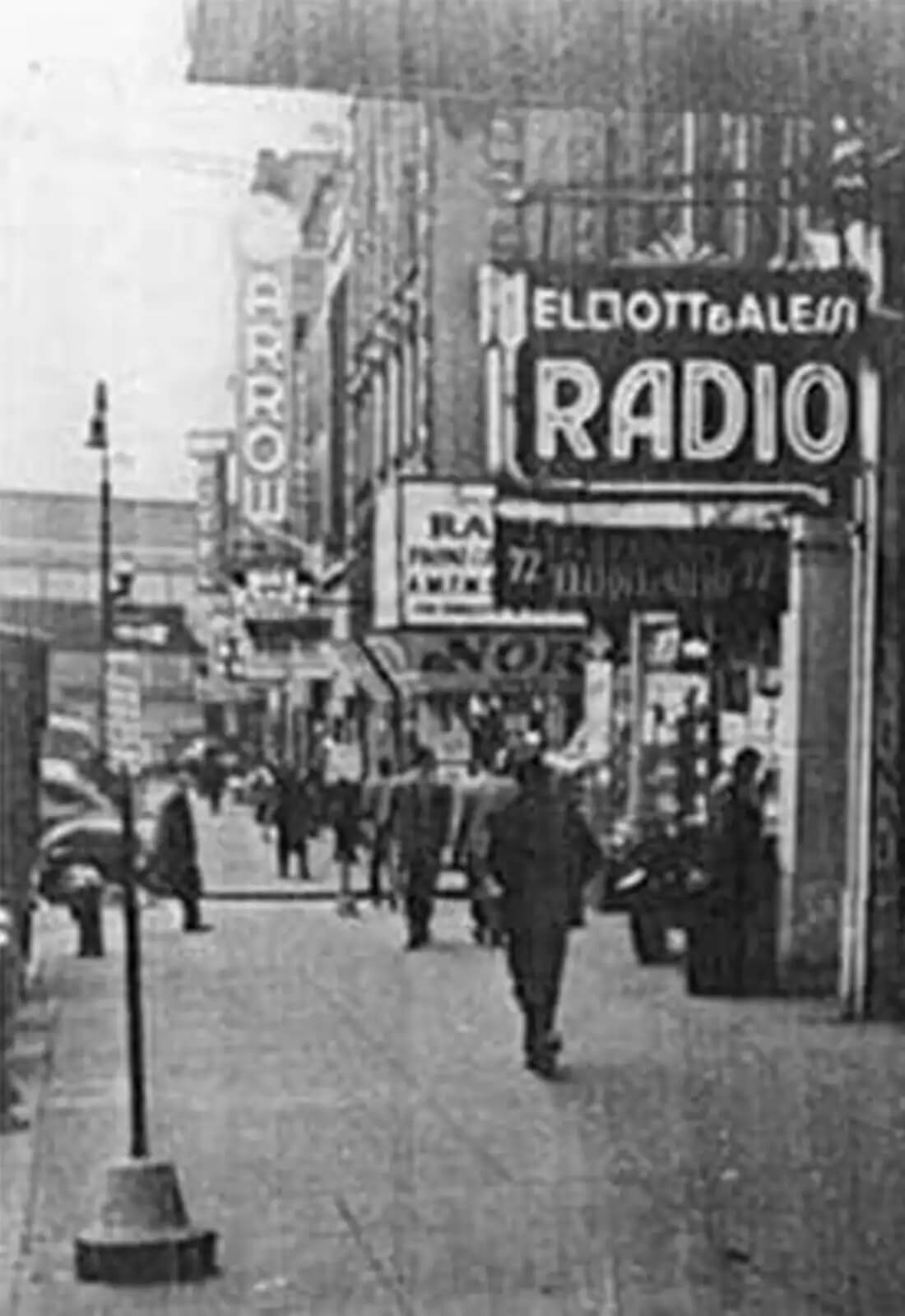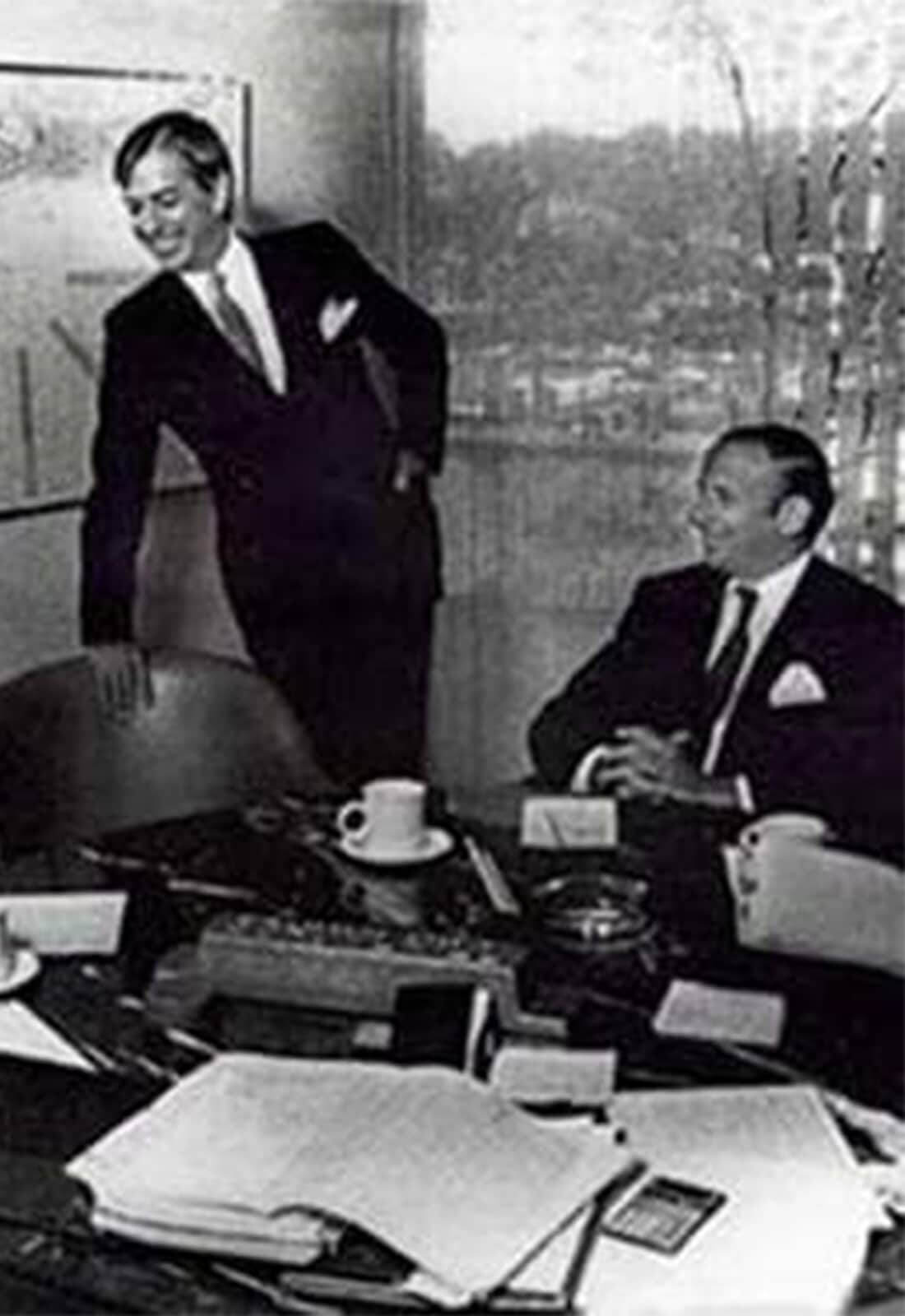Arrow History
Arrow Electronics was founded in 1935 when a retail store named Arrow Radio opened on Cortlandt Street in the heart of lower Manhattan’s “Radio Row,” the birthplace of electronics distribution. Arrow Radio, established by Maurice (“Murray”) Goldberg, sold used radios and radio parts to retail customers. Other industry pioneers with businesses nearby were Charles Avnet and Seymour Schweber.
Arrow Radio, established by Maurice (“Murray”) Goldberg, sold used radios and radio parts to retail customers.

The Vision
In 1968, Glenn, Green and Waddell, a partnership formed by three recent graduates of the Harvard Business School, B. Duke Glenn Jr., Roger E. Green and John C. Waddell, led a private investor group that acquired the controlling interest in Arrow. With Duke Glenn as chairman, the new leadership foresaw an opportunity to transform the electronics distribution industry.
The company’s strategic vision was described in its 1969 Annual Report:
“Significant opportunities exist for us in the electronics distribution business owing mainly to the fragmented competitive environment, in which the sales of approximately 1,500 small distributors account for about half of the total market. It appears likely that the future will belong increasingly to those few substantial distribution companies with the financial resources, the professional managements, and the modern control systems necessary to participate fully in the industry’s current consolidation phase.
Arrow experienced its first rebirth when three Harvard Business School friends acquired a controlling interest in 1968. B. Duke Glenn Jr., Roger E. Green, and John C. Waddell saw the fragmented electronics distribution environment and recognized a unique opportunity to transform the industry.

Decade of Rapid Growth
Entering the 1970’s with $9 million of annual distribution sales, Arrow ranked no. 12 among U.S. electronics distributors. No. 1-ranked Avnet was eight times Arrow’s size.
During the ’70s decade, by winning key semiconductor franchises (led by Texas Instruments in 1970) and opening sales offices in over 20 U.S. cities, Arrow assertively rose through the ranks, growing its electronics distribution business at an average annual rate of 34 percent. By the end of the decade, the company’s electronics distribution sales had climbed to $177 million, establishing Arrow as the country’s second largest electronics distributor.
The aggressive growth strategy employed by Arrow to gain industry predominance required liberal infusions of working capital, for which the company relied on frequent public bond offerings that temporarily gave rise to unconventionally high levels of debt. Additional growth capital was provided through the 1969 acquisition of a cash cow: Schuylkill Metals Corporation, a lead recycling company. (This business, having served its purpose, was sold in 1987.)
The 1970s also saw Arrow discontinue its retail operations and inaugurate electronics distribution’s first integrated online, real-time computer system to provide up-to-the-minute inventory positions and facilitate remote order entry. The year 1979 brought Arrow’s listing on the New York Stock Exchange, as well as its acquisition of Cramer Electronics (historically the U.S.’s second-largest distributor), the company’s first major industry acquisition, which provided access to most of the leading markets in the western United States.
Arrow acquired Cramer Electronics in 1979, making the company a national coast-to-coast distributor for the first time. This was Arrow’s first major industry acquisition, and it opened up most of the leading markets in the western United States.

A Bold Return From Tragedy
In 1980, a fire in a hotel conference center killed 13 members of Arrow’s senior management, including Glenn and Green. Waddell assumed leadership and, in 1982, recruited Stephen P. Kaufman, formerly a partner of McKinsey and Company, to join Arrow as president of the company’s electronics distribution division.
Kaufman succeeded Waddell as CEO in 1986 and as chairman in 1994. In 2000, 15-year Arrow board veteran Daniel W. Duval was named as Kaufman’s successor, followed by William E. Mitchell in 2003. The period of leadership under Kaufman and through Mitchell saw Arrow enter the 21st Century with $9 billion in electronic component global sales and $3 billion of sales in its burgeoning computer products business. Arrow was named during this time among “FORTUNE’s “World’s Most Admired Companies,” with sales climbing to $17 billion nearing the end of the decade.
The hotel fire still ranks among the worst corporate disasters in American business. No one could anticipate that Arrow would have the fortitude to turn tragedy into the inspiration and drive that would make it one of the world’s largest technology distributors.

Present Day
Michael J. Long succeeded Mitchell as CEO in 2009, becoming chairman in 2010. A seasoned executive, Long served at Schweber Electronics from 1983 to 1990 before joining Arrow in 1991 with the merger of both companies. He served in a number of increasingly senior management positions with Arrow before becoming CEO and leading the company through a decade of growth that saw over 40 strategic acquisitions and the expansion of its global components and computer systems businesses.
On June 1, 2022, Sean J. Kerins succeeded Long as president and CEO. Kerins joined Arrow in 2007 as vice president of storage and networking, North America, for the company’s enterprise computing solutions business. He went on to become regional president before being named global president of the business in 2014 and then Arrow’s chief operating officer in 2020.
The company is ranked number 109 among the FORTUNE 500 and has been recognized for 11 consecutive years at the top of its industry ranking on FORTUNE’s “World’s Most Admired Companies” list.
Arrow Electronics, Inc. is currently ranked 109 among the Fortune 500.


